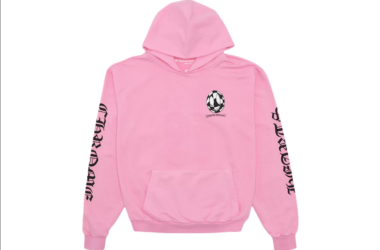In today’s digital world, managing brand assets efficiently and effectively is crucial for businesses to maintain a consistent and strong brand image. A brand asset management system, also known as a brand management system, is a centralized platform that enables businesses to store, organize, and collaborate on brand assets, such as logos, images, videos, marketing collateral, and more.
In this article, we will explore how a brand asset management system can unlock the full potential of your brand assets, and how it can be used as a creative collaboration platform for your creative teams.
Why Brand Asset Management System is Important
Brand assets are the visual and auditory elements that represent your brand, and they play a critical role in shaping your brand identity, messaging, and customer perception. Consistent and cohesive brand assets help to create a unified brand experience across different touchpoints, such as websites, social media, print materials, and more.
However, managing brand assets can be challenging, especially for businesses with multiple teams, departments, and locations. A brand asset management system provides a centralized solution that helps businesses overcome these challenges and maximize the value of their brand assets.
Benefits of Brand Asset Management System
Brand asset management system offers numerous benefits for businesses, including:
Centralized Storage and Organization: The brand asset management system provides a central repository where businesses can store and organize all their brand assets in one place. This makes it easy for team members to access and locate brand assets quickly, saving time and effort. With advanced search and tagging capabilities, the brand asset management system allows for efficient organization and retrieval of brand assets, ensuring that team members can easily find the right assets they need for their creative projects.
Enhanced Collaboration: The brand asset management system serves as a creative collaboration platform, allowing team members to collaborate on brand assets in real-time. Team members can easily share, review, and provide feedback on brand assets, streamlining the creative process and promoting collaboration among team members. With the ability to add comments, annotations, and version control, the brand asset management system ensures that all team members are working on the latest and approved versions of brand assets, avoiding inconsistencies and errors.
Brand Consistency and Compliance: A brand asset management system helps businesses ensure brand consistency and compliance by enforcing brand guidelines. Businesses can establish and enforce brand guidelines, usage rules, and compliance requirements within the brand asset management system, ensuring that all team members adhere to the brand’s visual identity, tone, and messaging. This promotes consistency across all marketing channels and touchpoints, creating a unified and impactful brand image.
Improved Productivity and Efficiency: The brand asset management system streamlines workflows and improves productivity by providing a centralized platform for managing brand assets. Team members can easily collaborate, access, and share brand assets, eliminating the need for manual file transfers or searching through multiple folders and drives. This saves time and resources, allowing team members to focus on their creative work and deliver projects faster.
Remote and Global Collaboration: The brand asset management system enables remote and global collaboration, allowing team members from different locations and time zones to work together seamlessly. Team members can access and collaborate on brand assets from anywhere, at any time, using any device with an internet connection. This promotes flexibility and inclusivity, allowing businesses to tap into a global talent pool and foster creativity among team members regardless of their location.
Best Practices for Using Brand Asset Management System as a Creative Collaboration Platform
To fully leverage the potential of a brand asset management system as a creative collaboration platform, businesses can follow these best practices:
Centralize and Organize Brand Assets: Ensure that all brand assets are stored and organized in a central repository within the brand asset management system. Establish a consistent naming convention, tagging system, and folder structure to make it easy for team members to locate and access brand assets quickly.
Define Brand Guidelines: Establish clear brand guidelines within the brand asset management system, including visual identity, tone, messaging, and usage rules. Communicate these guidelines to all team members to ensure brand consistency across all creative projects.
Provide Access and Permissions: Grant appropriate access and permissions to team members based on their roles and responsibilities. This ensures that team members have the right level of access to brand assets, and only authorized users can make changes or updates to brand assets.
Establish Version Control: Establish version control within the brand asset management system to manage updates, revisions, and changes to brand assets. This ensures that team members are working on the latest and approved versions of brand assets, avoiding inconsistencies and errors.
Train and Educate Team Members: Provide training and education to team members on how to effectively use the brand asset management system as a creative collaboration platform. Ensure that all team members are familiar with the features, functionalities, and best practices of the system to maximize its potential.
Monitor and Enforce Compliance: Regularly monitor and enforce compliance with brand guidelines and usage rules within the brand asset management system. Address any deviations or violations promptly to maintain brand consistency and integrity.
Conclusion
The brand asset management system is a powerful tool that can unlock the full potential of your brand assets and serve as a creative collaboration platform for your creative teams. By centralizing and organizing brand assets, enforcing brand guidelines, promoting collaboration and feedback, and ensuring compliance, businesses can streamline their creative workflows, improve productivity, and maintain a consistent and impactful brand image across all touchpoints. Invest in a reliable brand asset management system that meets the needs of your business and empowers your creative teams to collaborate, create, and innovate to take your brand to new heights.







